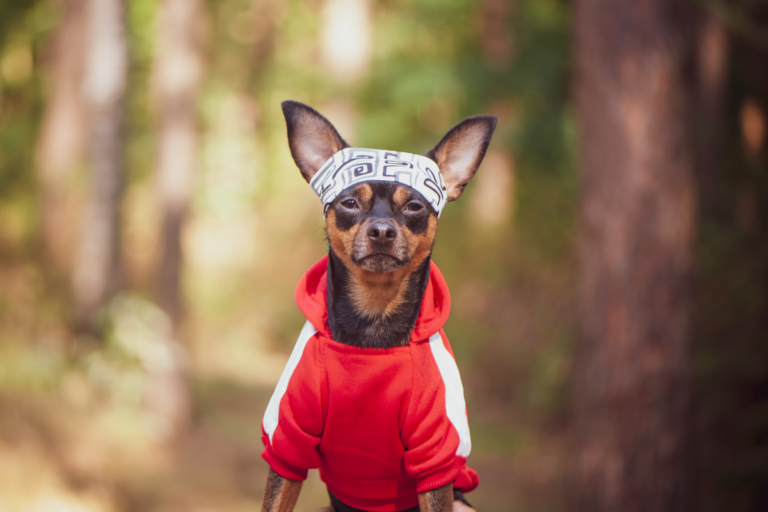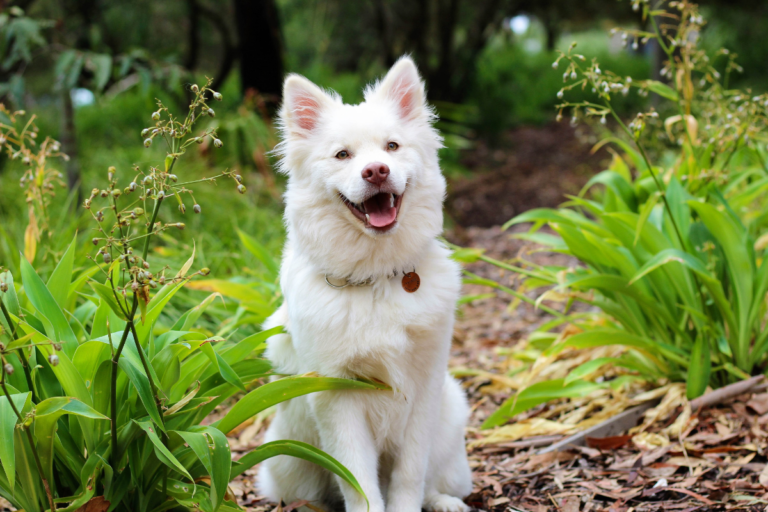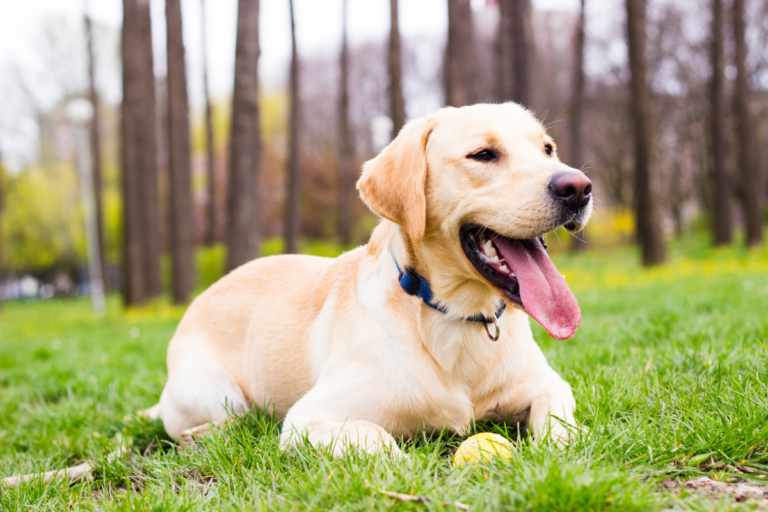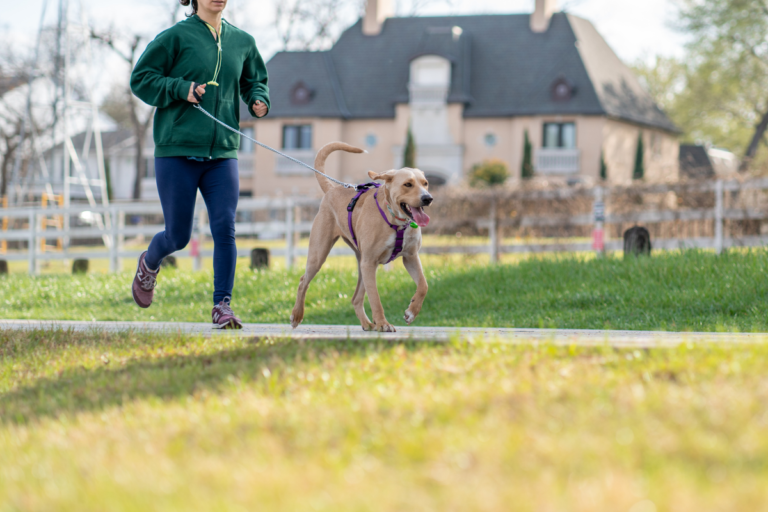Embark on a Fitness Adventure: Discovering Canine Well-being
Understanding Canine Fitness
Keeping our dogs in shape is like hitting the jackpot for their health and happiness. So, let’s chat about what fires up their need to move and the danger zone of too much running around.
Factors Affecting Dog Activity Levels
A bunch of things can rev up or chill out a pup’s activity, like their age, size, where they hang out, and yes, even their human’s vibe.
- Age: Little ones (puppies) and teens are like energizer bunnies, zipping around all day long. But don’t count out grandpa pup; he might slow down a bit and would rather nap than play fetch nonstop. (NCBI)
| Age Group | Activity Level |
|---|---|
| Puppies | Full throttle |
| Adolescents | Full throttle |
| Adults | Just right |
| Seniors | Chillax mode |
- Size: Big dogs often strut their stuff more enthusiastically than their pint-sized pals (NCBI).
| Size | Activity Level |
|---|---|
| Small | Easygoing to Just right |
| Medium | Just right |
| Large | Full throttle |
-
Environment: Country dogs tend to be top athletes compared to their city cousins, especially when they’re young pups. They’ve got space galore for wild explorations.
-
Owner’s Lifestyle: Fun fact, dogs with older folks are on the move more than with the younger crowd. Maybe it’s the mellow pace or all the love and attention they get.
Risks of Overexercising Dogs
While letting our dogs run free is great, watching out for too much playtime is just as crucial.
-
Wear and Tear on Paw Pads: Push them too hard, and their paws pay the price. Torn-up pads aren’t a pretty sight, leading to infections which scream trouble if not taken care of (PetMD).
-
Muscular Pain and Stiffness: Overdoing it can leave them sore and achy. They might move slower or whimper out of pain. Keep an eye out after they’ve rested up post-rough housing (PetMD).
| Risk | Symptoms |
|---|---|
| Paw Pad Damage | Tears, redness, worn pads, infections |
| Muscular Pain | Struggling to get up, avoiding walks or jumps, whimpering |
Maintaining the right activity balance can keep your furry pal fit and fabulous. Check out more on k9 fitness to fit workouts right. Level up their playtime with fun dogs workout options for every breed. Keep your eyes peeled for their health signals to dodge those dog sneezing fits or other exercise woes.
Keeping Dogs Active: The Right Way
Think about your dog, lounging around in fuzzy slippers all day. Now, let’s get them moving with the right amount of exercise that suits their needs. We’ll tune into some practical ways to boost fitness, cut down on boo-boos, and get those tails wagging with age-appropriate workouts.
Cookin’ Up an Exercise Schedule
No one-size-fits-all here, folks! Different dogs demand different workout playlists—some like the gentle hum of a stroll, while others chase a fast beat with running, swimming, or catching a frisbee—classic fetch style.
| Dog Type | Recommended Daily Movement |
|---|---|
| Little Guys | 30 – 60 minutes |
| Mid-Sized Champs | 1 – 2 hours |
| Big Fellas | 1 – 2 hours |
| Workaholic Breeds | 2+ hours |
Stickin’ to the plan keeps Fido fit and limits those fun police encounters caused by pent-up energy. Dive into things like the AKC FIT DOG program for structured fun.
Dodging Doggy Disasters
Stopping injuries in their tracks is all about balancing ball-chasing with chill time, and knowing when to pump the brakes. Here’s what can happen if we keep pushing beyond their limits:
- Paw Trouble: Cuts or redness, sore tootsies, and ouch-inducing infections can pop up when running wild (PetMD).
- Muscle Strain: Getting up becomes a wrestling match, moods turn sour, and there’s a chorus of whimpers after too much zooming around.
- Heat Woes: Short-nosed breeds, young pups, and golden oldies hit snooze fast in hot weather, and overheating can spell major trouble.
- Joint Jangles: Stubby-legged pals like Bassets and Dachshunds get joint grumbles too—they’re born that way (PetMD).
To stay clear of all this, let ’em rest, keep them sipping water often, and gear up right; our training and gear guide holds some handy hints.
Age Matters for Moves
Puppies need a bit of a softer start with manageable, gentle exercises to ensure their budding bodies don’t bear the brunt of anything too harsh. As dogs mature, tweaking their workout playlist is essential—senior buddies might enjoy pool paddling more than pounding the pavement.
| Age Stage | Suggested Jade Breakers |
|---|---|
| Youngsters | Mini walks, gentle playtime |
| Grown-ups | Jogging, exploring outdoors, lively games |
| Golden Oldies | Slow-paced strolls, doggy paddles, easygoing frolics |
Proper exercise keeps them in peak spirits and cuts down on injuries. Regular vet visits keep us on top of adjustments to their active life.
For more guidance that tickles your fancy, give our takes on fitness with your dog and fit Labrador practices a look.
Let’s get them moving right and keep them groovin’ for a lifetime of healthy hijinks!
Canine Nutrition for Fitness
Keeping our pups active isn’t just about playtime and walks. Their nutrition game needs to be on point too. Let’s chew over how to feed our energetic fur babies so they can chase squirrels and fetch like pros.
Caloric Needs for Active Dogs
First up, understanding how many calories our dogs need is step one in making sure they stay spry. Here’s the math we use to figure it out:
[
(90-110) \times (\text{ideal body weight in kg})^{0.75} = \text{kcal per 24 hours}
]
Like, if your Labrador weighs in at 30 kg, here’s how you do the calorie count:
[
90 \times (30^{0.75}) = 1,610 \text{ kcal/day}
]
We’ve whipped up a handy-dandy table for a clearer picture:
| Dog Weight (kg) | Daily Caloric Intake (kcal) |
|---|---|
| 10 | 600 – 700 |
| 20 | 1,200 – 1,300 |
| 30 | 1,600 – 1,810 |
| 40 | 2,000 – 2,300 |
Source: Today’s Veterinary Practice
Dogs who are real fitness buffs might need more fuel based on how hard they’re hitting the doggy gym.
Role of Macronutrients in Dog Fitness
Macronutrients—the lifeblood for our canine champs. Here’s how each does its part:
- Proteins: The secret sauce for strong, healthy muscles.
- Fats: The go-to fuel for long doggy jogs. Ever heard about those Beagles? The ones who ran 20 miles on a fat-heavy diet while their pals pooped out after 15 on less fat? Yeah, fats matter (Cornell University).
- Carbohydrates: Quick energy hits, but our pooches are more into fat anyway.
So, instead of piling on the chow, toss in more fats to keep your pooch positively pumping with energy (Today’s Veterinary Practice).
Pre- and Post-Exercise Nutrition
Eats before and after the romp can make a world of difference:
- Pre-Exercise: Munchies 2-3 hours before playtime help keep energy even without the tummy ache thing.
- Post-Exercise: Hydration nation, baby! Followed by a good meal within 30 minutes to reload those energy stores and fix up muscles. Protein and fats will rock the recovery.
Here’s a quickie on pre- and post-exercise snacks:
| Timing | Nutrition Tips |
|---|---|
| Pre-Exercise | Light meal 2-3 hours before, a healthy mix of protein and fat |
| Post-Exercise | Start with water, then bring in the balanced meal within 30 minutes, loaded with protein and fat |
To keep our four-legged pals in tip-top shape, their chow needs to be as dialed-in as their play schedule. Whether they’re your bouncy buddy of a fit Labrador or effortlessly light skinny pugs, getting their calorie and nutrient groove on will get them to their fitness goals. For more tips on crafting a stellar k9 fitness plan, check out pages on fit paw and crossfit dogs.
Special Considerations for Canine Athletes
Keeping our doggy athletes in top shape isn’t as simple as it looks. There are a few important things to think about, from their health checkups to the safest spots to get their sweat on (or fur? Let’s be honest), and the warm-up and cool-down routines that are crucial for their agility. So let’s explore what it takes to have our canine champs ready and raring to go!
Health Check Before Starting Workout
Before jumping into a strenuous exercise routine, a trip to the vet is a must for our canine pals. A thorough health check can sniff out hidden issues before they become big problems. It’s also a good time to make sure Fido isn’t carrying around a few extra pounds, as extra weight can really wear down those bones and joints. Here’s what the vet will look at:
- Complete Physical Exam: An all-around health check-up.
- Weight Assessment: Time to see if Sparky’s been hitting the treat jar too hard.
- Joint and Bone Health: Checking for any early signs of arthritis or related issues.
- Cardiovascular Health: Making sure their ticker and lungs are in top shape.
For some breed-specific tips on keeping your pup fit, you might want to check out our article on helping your fit labrador stay in shape.
Creating Safe Exercise Environments
Choosing the right place for your dog’s workout is kind of a big deal. You want somewhere secure, either fenced in or with a leash securely fastened to avoid any wild chases. Grass is perfect (soft landings and all that!), but you might want to steer clear of hard surfaces like concrete or asphalt to protect their joints.
| Surface Type | Safety Rating for Dogs |
|---|---|
| Grass | Excellent |
| Sand | Okay-ish |
| Concrete | Not so much |
| Asphalt | Definitely nah |
Don’t forget to have a quick peek around for anything dangerous like sharp bits or toxic plants. Need more ideas? Our piece on fitness with dog might do the trick!
Warm-up and Cool-down Techniques
Warm-ups and cool-downs are not just for us humans! Our four-legged friends need them to dodge those nasty pulled muscles. A proper warm-up gets their blood pumping, while a cool-down helps relax those muscles after a play session (Dog Sports 4U Academy).
Warm-up Techniques
- Simple Rub Down: Give a gentle massage to awaken those muscles.
- Gentle Stretching: A focus on legs, back, and neck to prime mobility.
- Light Walking or Jogging: Ease them into the routine.
Cool-down Techniques
- Slower Walks: Chill walks lower the heart rate.
- Hydrate: Plenty of water breaks are key!
- More Stretching: Helps loosen tight muscles.
Want more on keeping your pet healthy while they exercise? Have a look at our guide on health check for dogs.
By keeping these tips in mind, we’re not just boosting our dogs’ health and happiness but also preparing them for the next exhilarating doggy adventure. For more tips on steering clear of common sports injuries, check out our k9 fitness article.
Building a Canine Conditioning Program
So, you’re thinking of whipping your pooch into shape, huh? Good for you! A solid plan’s gotta include making sure our furry pals are fit and fine. Let’s see how we can build a killer routine for those doggo athletes out there.
Components of a Balanced Regimen
When it comes to keeping dogs in tip-top shape, think of four biggies: chow, muscle-building, heart-pumping, and skills practice. Our pals over at Dog Sports 4U Academy give a nod to easing in nice and slow, cranking things up only when the pup’s ready to roll.
Major Components
- Nutrition: A good grub mix that’s just right for your dog.
- Strength Training: Pump that iron—canine style!
- Endurance Training: Keep that ticker tickin’ with some good ol’ cardio.
- Event Training: Get them ready for what they love, be it fetch or frisbee.
Ease into the whole shebang to dodge any nasty injuries and make sure the pooch is having a blast. ‘Cause pushing too hard? That’s a one-way ticket to trouble-ville.
Strength Training for Canine Athletes
Muscles on a mutt? Heck yeah! Strength exercises boost that doggy power. Our friends at Dog Sports 4U Academy suggest giving it a go three times a week for around 15 minutes each time.
Recommended Exercises
- Short, Intense Retrieving Sprints: Gets the whole doggo body movin’.
- Uphill Running: Super for those legs and stamina.
Here’s a sample setup:
| Day | Exercise | Duration |
|---|---|---|
| Monday | Short, Intense Retrieving Sprints | 15 minutes |
| Wednesday | Uphill Running | 15 minutes |
| Friday | Short, Intense Retrieving Sprints | 15 minutes |
Get these moves into your dog’s rotation, and they’ll be the best-conditioned yapper on the block!
Avoiding Common Sport-Related Injuries
Keeping our canine champs injury-free is the goal. Warming up and cooling off are musts to dodge those pesky muscle pulls. The folks at Dog Sports 4U Academy recommend a nice rub down and gentle stretches for prep and wind-down.
Warm-Up and Cool-Down Techniques
- Warm-Up: Start with a gentle trot or a relaxing walk.
- Cool-Down: Incorporate a few soft stretches and chill strolls.
Safe Exercise Environments
Safety first, people! Our dogs need secure spots to flex those muscles. Stick to fenced spaces or use a leash. Soft ground’s tops—skip the hard stuff like concrete to keep joints and bones happy (Dog Sports 4U Academy).
Stick to these pointers and get these routines into our pets’ day-to-day, and we’ll keep those pups spry, bouncy, and safe from harm. For more cool info on exercising with dogs, swing by our pages on fitness with dogs and dogs workout.
Monitoring Canine Fitness Progress
We all want to keep our pups in top-notch shape, but let’s be sure they’re not overdoing it. We’ll chat about spotting those subtle signs that say “hold up,” when we should call in the vet cavalry, and how to use the right gear to keep our four-legged buddies not just fit but fabulous.
Signs of Overexertion or Injury
Keeping an eye out for signs of Fido going a bit too hard can save a world of hurt later on. Too much fetch, and suddenly you’re looking at sore paws or worse. Here’s what to keep an eye on:
- Paw Pad Woes: Check for redness, tears, and that “ouch” look
- Muscle Soreness: Does Fluffy struggle to get up or seem less keen on jumping? Listen if they’re whining or moving gingerly
- Signs of Heat: Panting like there’s no tomorrow, laying around grumpily, or even a temp over 106°F
If we spot any of this, time to hit the brakes and show some lovin’—fast. For more on how to avoid these downturns, take a peek at our piece on k9 fitness.
Veterinary Care for Active Dogs
Our fur friends need regular check-ups, just like us. The vet’s our best friend when it comes to keeping Rover healthy and catching any snags early on. Here’s what we focus on:
- Health Checks: Baseline exams to see how those joints and ticker are holding up
- Ouchy Treatments: Getting a handle on any boo-boos
- Feeding Tips: Guiding those calorie counts and figuring out what munchies are best before and after playtime (Today’s Veterinary Practice).
Got a Fido that’s all about those long adventures? Some post-run carbs could be just the thing to help them bounce back.
Role of Proper Training and Equipment
Proper training and top-quality gear are essential to keep our dog’s tail wagging while they strut their stuff. Check out what matters most:
- Training Time: Smart training methods can steer clear of injuries. Regular gym time for pooch builds their endurance and strength. More on dogs workout.
- Gear Up: Quality counts—look for good fit with harnesses and durable leashes. Maybe even pick up some booties to protect those valued paws.
- Safe Spots: Keep our walks and runs risk-free. Going out when it’s cooler, like early morning or late evening, can make all the difference in keeping them comfy.
By picking up on signs of overdoing it, sticking close with our vet, and getting training and gear right, we’re giving our dogs the best shot at being fit and full of joy. Dive deeper into fitness tips or gear suggestions in our piece on fitness with dog.
Here’s a handy chart for the running dogs and their calorie needs:
| Dog’s Weight (kg) | Distance Traveled (km) | Calories Needed (kcal) |
|---|---|---|
| 10 | 5 | 55 |
| 15 | 5 | 82.5 |
| 20 | 5 | 110 |
For even more on how to keep our busy-bee pups fit without going overboard, check out our guide on crossfit dogs.






